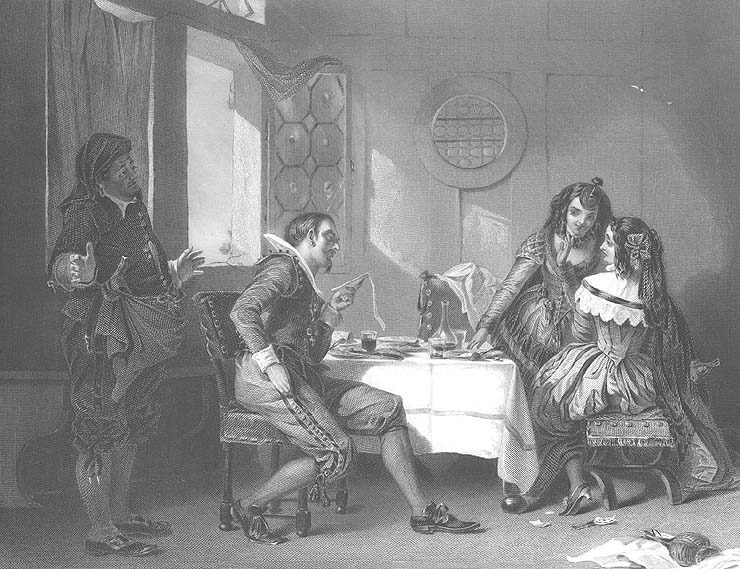
We pack properly to protect your item!
BIOGRAPHY OF ARTIST: Augustus Leopold Egg (1816-1863) was an English painter, was born on the 2nd of May 1816 in London, where his father carried on business as a gun-maker. He had some schooling at Bexley, and was not at first intended for the artistic profession; but, developing a faculty in this line, he entered in 1834 the drawing class of Mr Sass, and in 1836 the school of the Royal Academy. His first exhibited picture appeared in 1837 at the Suffolk Street gallery. In 1838 he began exhibiting in the Academy, his subject being a " Spanish Girl "; altogether he sent twenty-seven works to this institution. In 1848 he became an associate and in 1860 a full member of the Academy: he had considerable means, apart from his profession. In 1857 he took a leading part in selecting and arranging the modern paintings in the Art-Treasures Exhibition in Manchester. His constitution being naturally frail, he went in 1853, with Dickens and Wilkie Collins, to Italy for a short trip, and in 1863 he visited Algeria. Here he benefited so far as his chronic lung-disease was concerned; but exposure to a cold wind while out riding brought on an attack of asthma, from which he died on the 26th of March I863 at Algiers, near which city his remains were buried. Egg was a gifted and well-trained painter of genre, chiefly in the way of historical anecdote, or of compositions from the poets and novelists. Among his principal pictures may be named: 1843, the "Introduction of Sir Piercie Shaf ton and Halbert Giendinning" (from Scott's Monastery); 1846, "Buckingham Rebuffed "; 1848, "Queen Elizabeth discovers she is no longer young "; 1850, " Peter the Great sees Catharine for the first time "; 1854, " Charles I. raising the Standard at Nottingham" (a study); 1855, the "Life and Death of Buckingham "; 1857 and 1858, two subjects from Thackeray's Esmond; 1858, " Past and Present, a triple picture of a faithless wife"; 1859, the "Night before Naseby "; 1860, his last exhibited work, the Dinner Scene from The Taming of the Shrew. The Tate Gallery contains one of his earlier pictures, Patricio entertaining two Ladies, from the Diable boiteux; it was painted in 1844. Egg was rather below the middle height, with dark hair and a handsome well-formed face; the head of Peter the, Great (in the picture of Peter and Catharine, which may be regarded as his best work, along with the Life and Death of Buckingham) was studied, but of course considerably modified, from his own countenance. He was manly, kind-hearted, pleasant, and very genial and serviceable among brother-artists; social and companionable, but holding mainly aloof from fashionable circles. As an actor he had uncommon talent. He appeared among Dickens's company of amateurs in 1852 in Lord Lytton's comedy Not so Bad as we Seem, and afterwards in Wilkie Collins's Frozen Deep, playing the humorous part of Job Want.
Please note: the terms used in our auctions for engraving, etching, lithograph, plate, photogravure etc. are ALL prints on paper, and NOT blocks of steel or wood or any other material. "ENGRAVINGS", the term commonly used for these paper prints, were the most common method in the 1700s and 1800s for illustrating old books, and these paper prints or "engravings" were created by the intaglio process of etching the negative of the image into a block of steel, copper, wood etc, and then when inked and pressed onto paper, a print image was created. These prints or engravings were usually inserted into books, although many were also printed and issued as loose stand alone lithographs. They often had a tissue guard or onion skin frontis to protect them from transferring their ink to the opposite page and were usually on much thicker quality woven rag stock paper than the regular prints. So this auction is for an antique paper print(s), probably from an old book, of very high quality and usually on very thick rag stock paper.
| |